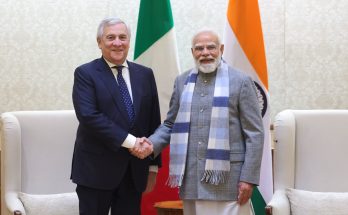The ‘Skill India’ Initiative is another shot in the arm for Prime Minister Narendra Modi’s India Inc, after the ‘Clean India’, ‘Make in India’ and ‘Digital India’ campaigns. Behind the high-visibility profile, lurk grim realities threatening the initiative.
Literacy Challenge
Basic academic qualification is a prerequisite to skills-training without which the core capabilities and core technical skills are impossible to develop in a candidate. In order to respond to the needs of the labour market and continue with gainful employment, basic academic skills are mandatory. But instead of invigorating the education sector and bringing more children to schools, the Modi government initiated education cuts in this year’s budget. The education spend was reduced from Rs 82,771 crore to Rs 69,074 crore. The Sarv Shiksha Abhiyan saw a cut of 22.14 % and the secondary education scheme, Rashtriya Madhyama Shiksha Abhiyan, witnessed a reduction by 28.7 %. When elementary education is compromised, how would Skill India undertake the “mapping of manpower requirements, not just in India, but globally as well”?
The aim of Skill India initiative is to boost the manufacturing sector and train the workforce with a global competitive edge, but with the literacy rate of mere 74.4% it’s going to be a tall order. The ‘competitive’ China is way ahead in education with a 95.1 % literacy rate and a gender difference of 4.8% as opposed to India’s 16.6%.
Skill India targets middle-class, lower middle-class and poor families. But poor and middle class have no access to affordable quality education. The Kendriya Vidalaya Schools and residential Navodaya Vidyalayas schools are in demand, but are woefully short in numbers.
The 2015-16 budget even slashed the mid-day meal funding to 16.41 % on which urban and rural poor family children are dependent. With these realities, can the government reach its target of skilling 40.2 crore (420 million) people by 2022? PM Modi’s scheme gives thrust to The Industrial Training Institutes which warrants a secondary level of education. The assumption is that an ITI aspirant would possess a reasonable quality of education. But assumptions apart, the reality offers a different story. The 2014 Annual Status of Education Report (ASER) states that only an average 48.1 % of Class V children across India can read a Class II-level text. India is ranked 73rd among 74 participating economies in PISA (Programme for International Student Assessment) rankings. PISA test assesses knowledge in math and science and real world problem solving skills in 15-year olds. Though PISA test is in preparation of knowledge economy, but during 2009-10 India participated in the rankings for the first and last time.
Skill India: How relevant for conflict regions
Who are the targeted beneficiaries of Skill India? Does the target of high and low-level of skilling people also include the marginalized, displaced, impoverished, illiterate and semi-literate youth of conflict regions? The Naxal hotbed of Jharkhand has a literacy rate of 67.63 %(Census: 2011). Years of neglect of education have kept 280167 children out of school (GoI report, Minutes of the 194th PAB meeting , 4 March, 2013). Retention of children in school in areas such as Simdega, Gumla, Khunti and Giridih (which witnesses intense Naxal activities) is “low and alarming”, the GoI report states. The Schedule Tribe children drop-out rates at 15 % remains a “cause of concern.”
For long, school-age youngsters living in Naxal regions have been denied their basic rights of education and protection. The provisions of Right To Education (RTE) Act provisions are ineffective in strife-torn regions. Where compliance is a possibility, departures happen.
For instance, the lack of funds had forced the school she visited in Latehar, to discontinue mid-day meals resulting in drop-outs. Books reach schools when half the academic year is over. Malnutrition is rampant in several tribal /Naxal regions that contribute to delays in cognitive development of young children.
The lack of education, nutrition and basic health care facilties are real traps to poverty and immediate concern. For vocational training to be effective these fundamental issues have to be first addressed.
Skilling youngsters of strife-afflicted areas require a totally different approach. A research conducted by Save the Children stated in its report ‘Caught in Crossfire: Children and education in regions affected by civil strife’ states that children have difficulty in comprehending and learning and need constant psycho-social support to reach their full potential.
Needless to say, the design and curriculum, training and counseling warrants contextualizing due to the barriers and challenges the youth face in these regions.
Skilling initiatives have been undertaken in conflict regions such as through the surrender-cum-rehabilitation policy where vocational skills are imparted with the idea to provide gainful employment. However, the ground reality is that surrendered cadres are used for counter-insurgency (India’s Child Soldiers, Asian Center for Human Rights).
A few skilling programmes include ‘Gram Tarang’ in Naxal regions of Orissa and Andhra Pradesh and project ‘Roshini’ in 27 Naxal/ Maoist affected districts of nine states.
An empirical evaluative study on the outcome of the earlier initiatives is warranted. After all, without recording the functional, socio-economic and security dividends, Skill India would be a wasteful expenditure and a total departure from the spirit of 12th Five Year Plan (FYP) on which the initiative rests.
(Urmila Rao is an independent researcher. The opinions expressed in this article are solely those of the author)
Author Profile
- India Writes Network (www.indiawrites.org) is an emerging think tank and a media-publishing company focused on international affairs & the India Story. Centre for Global India Insights is the research arm of India Writes Network. To subscribe to India and the World, write to editor@indiawrites.org. A venture of TGII Media Private Limited, a leading media, publishing and consultancy company, IWN has carved a niche for balanced and exhaustive reporting and analysis of international affairs. Eminent personalities, politicians, diplomats, authors, strategy gurus and news-makers have contributed to India Writes Network, as also “India and the World,” a magazine focused on global affairs.
Latest entries
 India and the WorldNovember 26, 2025G20@20: Africa’s Moment – The Once and Future World Order
India and the WorldNovember 26, 2025G20@20: Africa’s Moment – The Once and Future World Order DiplomacyOctober 4, 2025UNGA Resolution 2758 Must Not Be Distorted, One-China Principle Brooks No Challenge
DiplomacyOctober 4, 2025UNGA Resolution 2758 Must Not Be Distorted, One-China Principle Brooks No Challenge India and the WorldJuly 26, 2025MPs, diplomats laud Operation Sindoor, call for national unity to combat Pakistan-sponsored terror
India and the WorldJuly 26, 2025MPs, diplomats laud Operation Sindoor, call for national unity to combat Pakistan-sponsored terror India and the WorldJuly 25, 2025When Fire Ends, Diplomacy Begins
India and the WorldJuly 25, 2025When Fire Ends, Diplomacy Begins








